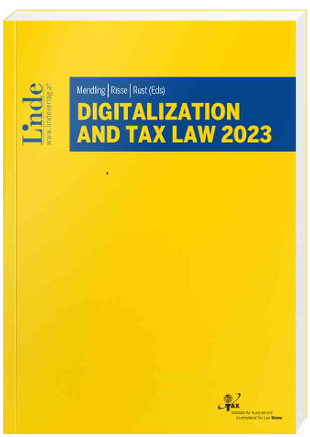Maturity Models for the Tax Function
Corporate tax functions need constantly ensure tax compliance and grow in their maturity as technology evolves. EY has conducted 2020 a Tax and Finance Operate (TFO) survey with 1,013 senior tax and finance executives globally (EY, 2020a). According to the opinion of respondents of the survey, the top priorities for the tax functions are Ensuring compliance with 27%, followed by Tax planning with 22% and Proactively supporting the wider business and capital agenda with 21%. Managing function’s costs with 16% and Providing insight with 13% are scored lower. The transformation projects will be linked to the prioritizations listed. The authors reveal that “83% of respondents said their tax and finance personnel will shift from technical focus to data, process and technology skills over the next three years.” (EY, 2020c, p. 5). The focus areas data, process, and technology should be considered in digital maturity models but may not be prioritized in non-specific maturity models for tax functions. The up-skilling of the tax professionals to the above-mentioned areas is required. The outcome that more than 60 % of organizations miss a sustainable technology and data plan, is indicating that the strategy is not mature enough and that they are not aligned with the overall digitalization strategy of the enterprise. Strategy as a dimension seems also to be a priority item. In order to measure a tax function, the tax management framework must be understood. Elgood et al. (2008) have provided comprehensive insight on the functioning of a tax function in the book “Tax Function Effectiveness” covering topics like strategy, processes, organization, people, data management, and technology. R. Risse (2018) has illustrated the attributes of “world-class” tax functions categorized in four main areas (Figure 11). The tax function in process-driven organizations can be also defined by the management of the tax business processes. The APQC Process Classification Framework has listed the business process “Manage taxes” under Level 1 “9.0 Manage Financial Resources” and under Level 2 “9.9 Manage taxes”. Processes that create taxable transactions are spread over several business processes. The required data input for the tax calculation, tax accounting, tax planning, and tax reporting gets more and more complex as the requirements by the tax administrations and other governmental bodies are increasing.
Figure 11 Attributes of a “world-class” tax function (Risse, 2018, p. 25).
Tax organizations are confronted with enhanced compliance requirements with a strict zero error tolerance in the performance of tax transactions. Very often the requirement “first time right” is a must-have that is pushed to upstream processes in order to achieve full tax compliance. The technology improvements in the upstream processes and effective data management are allowing significant opportunities in areas, that require the handling of massive data. Some problem statements related to strategy, technology and data, that are preventing an effective tax function of MNE’s, have been summarized by KPMG using the following headings: “Many organizations maintain data in multiple systems; The data is maintained in ERP systems often contains errors or anomalies or is incomplete; Most ERP systems are not built with the tax function in mind, Compliance with tax legislation in many jurisdictions requires adjustments to be made that fall outside transactions that are recorded in an ERP System” (KPMG, 2018, p. 8). The KPMG article also emphasizes the enhanced data collection by different tax authorities with the help of technology. Countries cited are Brazil, China, EU, UK, and the US by listing different initiatives. Since 2018 even much more countries have been elevating their technology efforts in the tax administration, especially India has to be added to the list of countries with significant digitalization efforts. New legal requirements on the internal control systems represent another challenge for the enterprises. It is required to integrate the internal controls seamlessly into the process landscape. Testing of such controls and the documentation of the testing will be key in the future. Tax administrations are more and more demanding interfaces to the legacy systems of taxpayers to receive their finance data. The OECD Forum on Tax Administration (FTA) defined a Tax Control Framework (TCF) with six essential building blocks (OECD, 2016a) as a guide: a) Tax Strategy Established, b) Applied Comprehensively, c) Responsibility Assigned, d) Governance Documented, e)Testing Performed and f) Assurance Provided. The TCF is key for designing models for tax management maturity. Despite the fact, that there is a limited number of available TMMs available for research, one of them has incorporated the TCF as part of the design principles. For this work, the researcher unearthed two tax management maturity models that were published on the internet. One model was designed by PwC and the other model by EY. They are described in the coming sections. The available documentation about the models is limited. Global tax consultancy companies are using TMMs as one of their methodologies to support customers during their transformational journey.
Read the full article on https://shop.lindeverlag.at/buch/digitalization-and-tax-law-2023-19852





